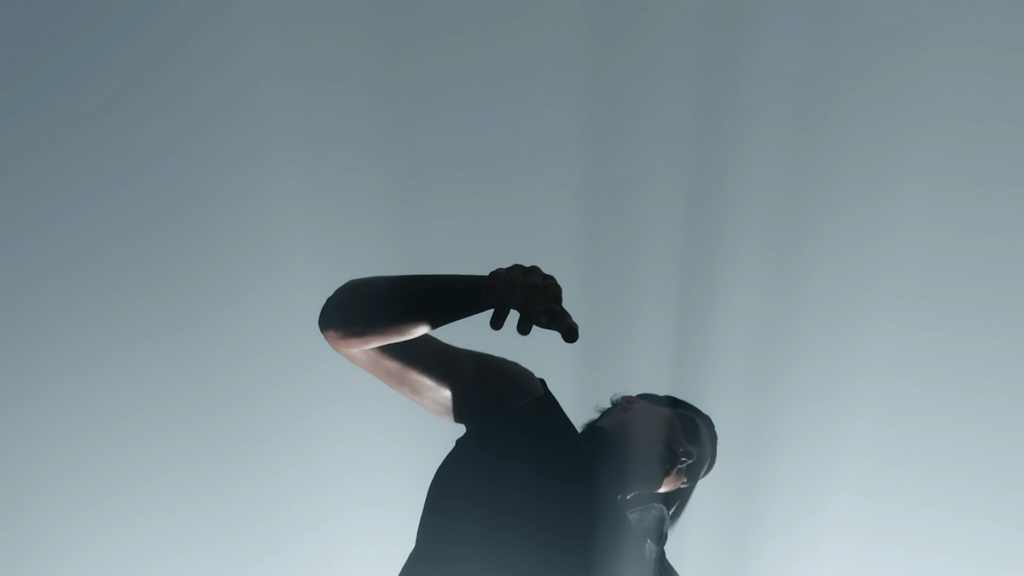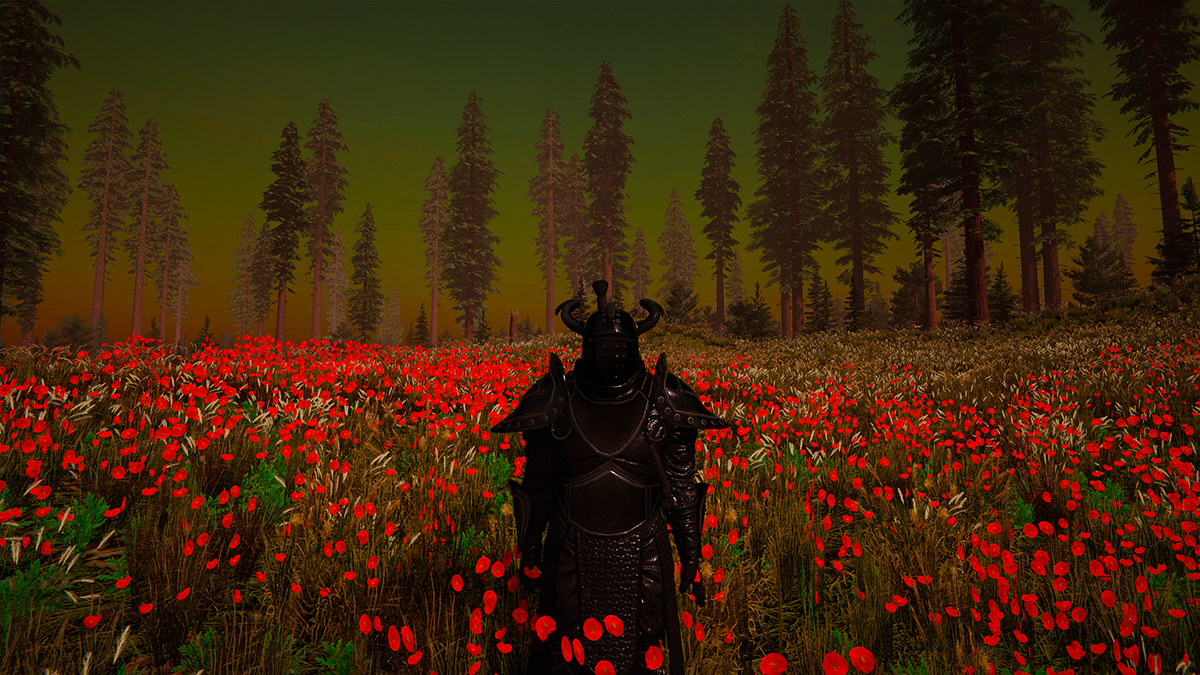

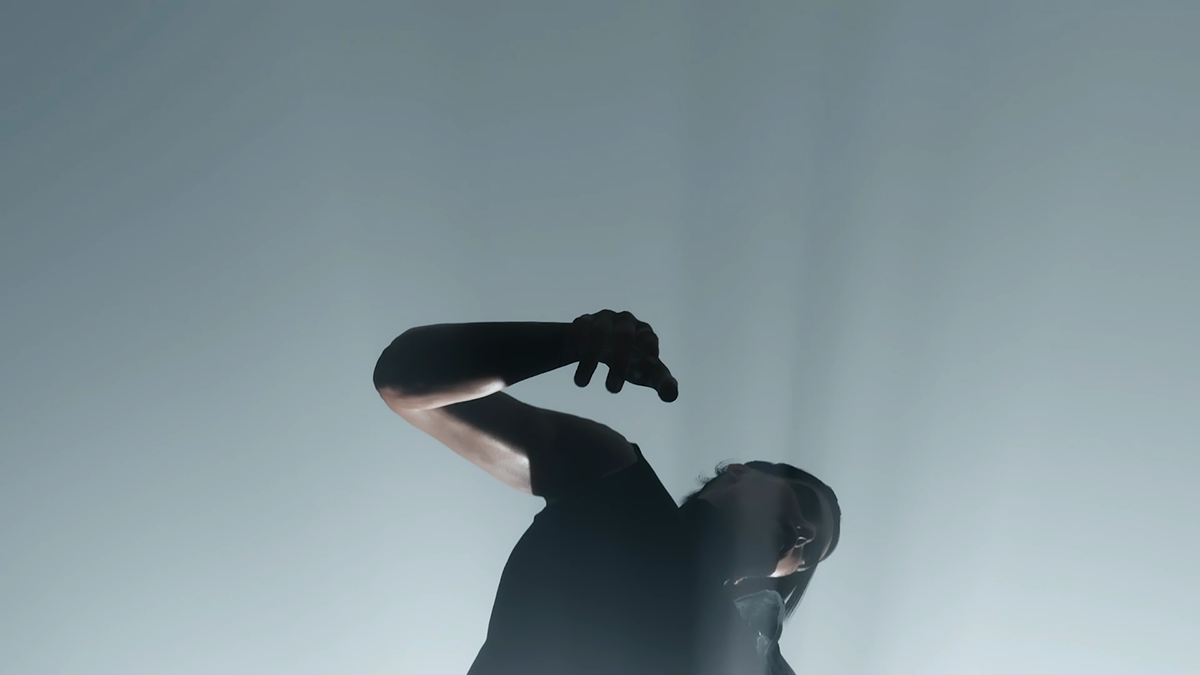
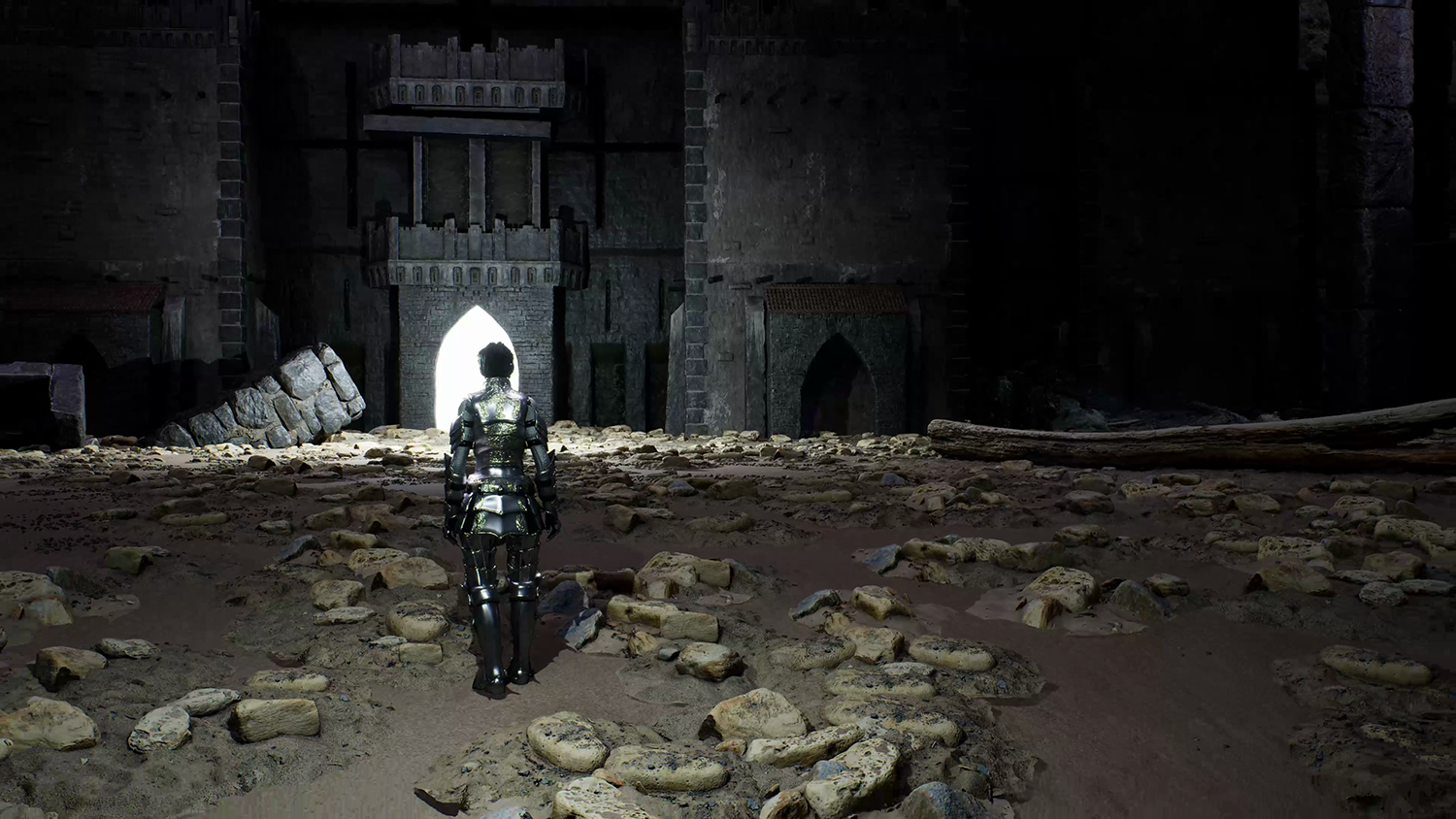
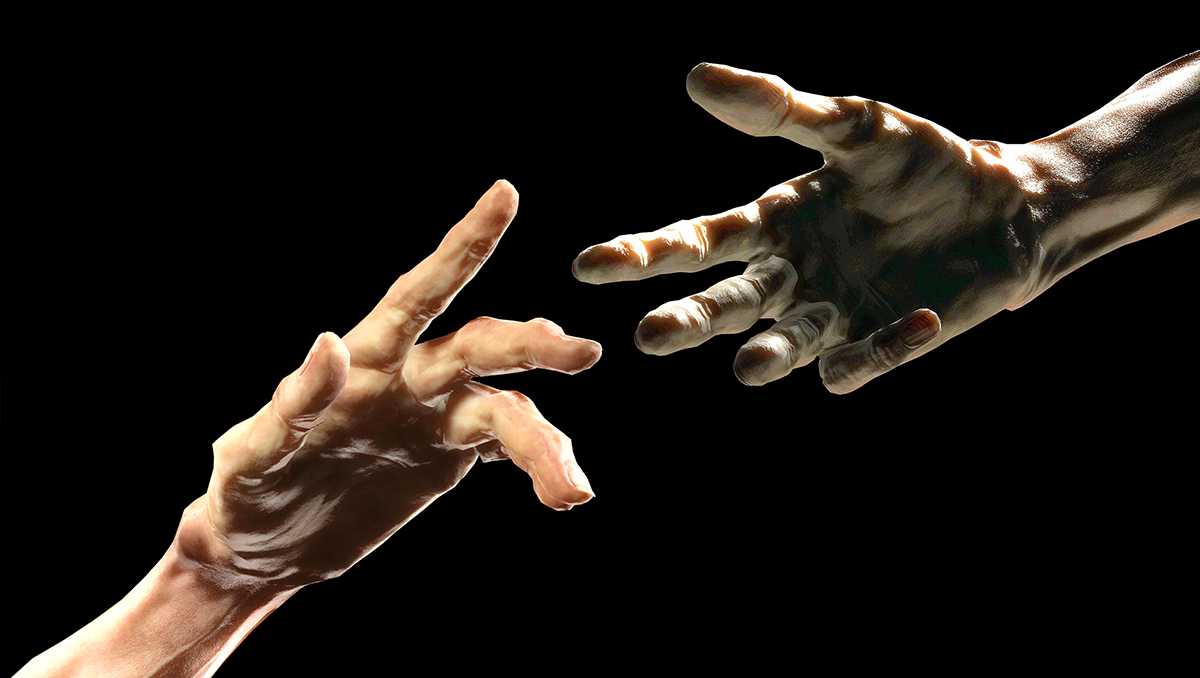
Mélanie Courtinat
March 2025
Mélanie Courtinat is an artist and art director whose work exists at the intersection of digital art, video games, and immersive experiences. Using game engines as her primary tool, she creates virtual worlds that challenge the way we engage with digital spaces, whether through personal artistic projects or collaborations with luxury and fashion brands.
Temple Magazine
Before diving into your work, can you tell us about your background and what led you to explore the digital and video game universe?
Mélanie Courtinat
I am both a contemporary artist and an art director, and I work exclusively with digital tools, primarily those of video games. I use game engines to create immersive experiences and virtual worlds. Concretely, this takes the form of 3D images and films, but mostly small artistic video games and virtual reality experiences. I'm particularly drawn to the core mechanics of gameplay—breaking them down, dissecting their inner workings, and exploring the emotions they generate.
At the same time, as an art director, I assist luxury, fashion and high jewelry brands in integrating video game culture and new technologies into their experiences. This can involve creating immersive worlds or interactive experiences tailored to their identity. Finally, I give lectures and courses in various art schools, for example I teach video game history at ECAL in Lausanne, I regularly run workshop on virtual reality at Beaux-Arts de Paris, I’m also a mentor for the video game section at Gobelins Paris.
Temple Magazine
What led you to use these digital tools in your artistic practice? Was video gaming already part of your world before you became an artist?
Mélanie Courtinat
I played a lot of video games as a kid, even though my parents did their best to stop me (and now, it’s my job!). What fascinated me was the freedom to explore, the ability to discover worlds beyond what other media could offer. But I never thought it was possible to be an artist and make video games. At the time, I loved creating, but I didn’t know which direction to take. I started developing my creative practice at Ateliers de Sèvres in Paris, where I quickly realized that I was terrible at everything: bad at drawing, mediocre at photography, terrible at architectural drawing… Basically, it wasn’t looking good.
Then, I discovered the Media & Interaction Design program at ÉCAL in Switzerland. That’s when I finally found my place, though even there, I felt like the only one interested in video games as an artistic medium. One day, I believe it was in 2016, at a dear friend’s place—he was the type to always have the latest consoles—he let me try a virtual reality headset and it was a revelation: “This is what I want to do.” I emptied my savings to buy my own headset and PC and made my graduation project in virtual reality. Unfortunately, at the time, it didn’t go over too well at my school.
Temple Magazine
What year was that?
Mélanie Courtinat
2017. So not too early, but not too late either. The school ended up investing in several VR headsets after I left. I even conducted a VR workshop there 2 years ago.
Temple Magazine
And what was your graduation project?
Mélanie Courtinat
A super angry-teenager project. At the time I was frustrated that people didn’t realize how extraordinary VR was, so I created a piece that punished those who didn’t actively engage with it. It wasn’t designed to guide the viewer, it was almost a revenge: “Oh, you don’t want to play? Okay, well then, you get nothing.”
Now, I don’t have that mindset anymore. Looking back, I realize that interaction with these new media isn’t automatic. We’ve been told our whole lives in exhibitions: “Look with your eyes, don’t touch.” But in video games, it’s the opposite. You have to try, grab the controller, interact. Now, my goal isn’t to punish people anymore, but to give them a hand.
Temple Magazine
After school, did you immediately know what you wanted to do, or did you consider working in the video game industry?
Mélanie Courtinat
Honestly, I was not drown to the industry at all. In France, if you want to work in video games, you automatically think about joining big companies like Ubisoft… But I didn’t want to be a tiny cog in a massive machine, working hard just to be in charge of something like the clouds in one scene of a giant game. I’ve actually collaborated with Ubisoft a few years ago for an exhibition, but as an invited external artist, which was great.
What worried me most after school was sustaining myself. My VR graduation project had been destroyed by the jury, but I still believed in it. So, I Googled things like “open call virtual reality”, applied everywhere, without even knowing if the opportunities were legit or not. And it worked. I started exhibiting my work all over, and in 2018, I even got to present my work at the Tokyo Game Show, which was my absolute dream.
Temple Magazine
Was that when you started working with brands?
Mélanie Courtinat
Yes, and totally by accident. One day, LVMH reached out, they were looking for a VR piece for their pavilion that was themed around new technologies and very specifically hanging gardens. I had a piece that fit perfectly, so they offered me to rent it and showcase it for a day. I thought, “Wait, you can make money like this?” That opened up a whole new perspective for me. That’s when I started working between art and brands, developing luxury experiences, while still maintaining my own artistic practice.
Temple Magazine
Over the past few years, things have evolved a lot. Your work is now exhibited alongside traditional plastic arts. Do you feel like those boundaries are disappearing?
Mélanie Courtinat
Yes, more and more. Museums and galleries weren’t at all prepared to exhibit VR or video games. It wasn’t a common medium for them, and it brought a lot of technical challenges. But now, that’s changing. My work is being exhibited in museums alongside paintings and sculptures. What remains a challenge, though, is accessibility. Many visitors have never held a controller in their lives. So I have to teach them everything, give them visual cues so they understand how to interact.
To give a quick, simple example, in one of my games, the controller glows, and there’s a straight forward message on screen that says: “Grab the glowing controller and press A to start.” Just that small instruction helps them understand that even inside the game, when they come close to shiny objects, they can collect them by pressing A. It’s a kind of invisible tutorial, and it works.
Temple Magazine
And in your games, beyond the technical aspect, what themes do you explore?
Mélanie Courtinat
I feel like my main drive is that I want to show audiences how amazing the mediums I use are. For me, video games aren’t just about entertainment. They can also convey deep emotions, address social and political messages, and open up new spaces for reflection. Recently, I’ve realized that I explore themes of isolation and the search for meaning a lot. I often create worlds where the player embodies a lone character, trying to understand their environment without too many clues. Many of my characters are seeking a space where they feel they belong.
But it’s always afterward that I realize my work was about that. At the time, I’m not consciously thinking, “I’m going to make a game about isolation.” I just create, and later, I realize, “Oh, of course, this was about that all along.”
Temple Magazine
Visually, your games have a strong identity, especially in the environments you create. How do you approach architecture and space in your work?
Mélanie Courtinat
I love architecture, especially brutalism. Those huge, raw concrete structures—they’re so inspiring. In my work, I’m not necessarily looking to tell a story in a traditional sense. Narration itself isn’t the first step. What I love most is creating worlds. The emotion I want to convey comes primarily from the space itself, the atmosphere, and how the player moves through the environment. That’s why I focus more on world-building than on characters. Lately, I’ve been trying to push myself to create more characters, but it’s more of an exercise than something that comes naturally to me.
Temple Magazine
How do you approach sound design in your projects? Do you collaborate with composers, or do you handle it yourself?
Mélanie Courtinat
For me, sound is 50% of the experience. A great soundscape can completely transform how a game feels. I often work with Yatoni, a friend and composer I used to be roommate with. It’s easy to communicate with him because I can use completely non-musical words, and he understands exactly what I mean. I can say something like “It needs more magic” or “It should be shinier”, and he knows how to translate that into music. Sometimes, when I don’t have a budget for an original soundtrack, I just do it myself. I grab sound effects from YouTube, spatialize them using my 3D tools… It's a DIY approach that is highly questionable, but I do my best..
Temple Magazine
Your first solo show is coming up in Fall 2025 at New Galerie in Paris. How are you approaching the installation of your work in the space? Has preparing for this exhibition—and the likelihood of many more in the future—changed how you think about scenography? Would you consider incorporating immersive installations, or do you think adding too many layers might obscure the core of your work?
Mélanie Courtinat
Honestly, I don’t know yet. I feel like if scenography becomes a bigger part of my work, I’ll need help. I’d need an external perspective, someone who can help me understand and manage physical space, because it’s not something I naturally grasp. For someone who likes to build words, that’s ironic. Even just in interior design, I’m terrible. For years, whenever people visited my apartment, they’d ask, “Did you just move in?” when I’d been living there for ages. It’s not even that I particularly care about minimalism, I just don’t think about decor too much.
Temple Magazine
So, would you say this isn’t a central aspect of your work?
Mélanie Courtinat
Exactly. In virtual spaces, it’s so much easier! If I don’t like something, I just hit Ctrl+Z. In two clicks, I can triple the size of an object so that it’s perfect. But in real life, if the couch you ordered ends up being too big for your space, you can’t magically shrink it. Unless you cut it with a saw—but I digress.
Temple Magazine
That also raises questions about the conservation of digital works.
Mélanie Courtinat
Yes, how long can a video game remain accessible? Will collectors have to update their machines every X years just to keep it running? Museums and galleries still aren’t always well-equipped for this kind of work. They don’t necessarily have gaming laptops or VR headsets. I make sure my games run on machines as accessible as possible, but it’s still a challenge.
Often, galleries are a bit lost when it comes to installing my work. I have to provide highly detailed guides, like “Download this file, unzip it using right click, wait for it to unzip completely, click here…” But things are improving. Some institutions are investing in the necessary equipment, which is a really positive sign for the future.
Temple Magazine
And does that add a lot of extra work for you?
Mélanie Courtinat
Definitely. But I see it as a necessary adaptation. Other artists have to pack their pieces and organize transports, while I just need to make sure the game runs properly. Sometimes, though, it’s a battle. Recently, I was dealing with an exhibition space where the technical team kept insisting, “Your files don’t work.” But I knew everything was fine. I had tested my games on a thousand different computers before sending them anything.
So I had to stand my ground and say, “The problem is on your end.”, over and over. And in those moments, you can’t doubt yourself. You can’t slip into imposter syndrome and think, “What if I really did send the wrong files? What if I messed up?” No. I know what I’m doing. My games work, their computers were not functioning properly. That said, in the end, they did invest in two brand-new computers just to show my work. That’s rare, and it’s a really encouraging sign!
Temple Magazine
You can also feel that there’s growing curiosity from the public about virtual experiences.
Mélanie Courtinat
Yes and it makes sense. We almost spend more time looking at screens than at the real world, so it’s only natural that art reflects that shift. Plus, video games aren’t that much of a new medium anymore. People grow up with them, they understand the mechanics, they know the vocabulary of games.
That said, even today, I teach students in their 20s who have never held a controller before. So at least I know I’m not completely outdated yet!
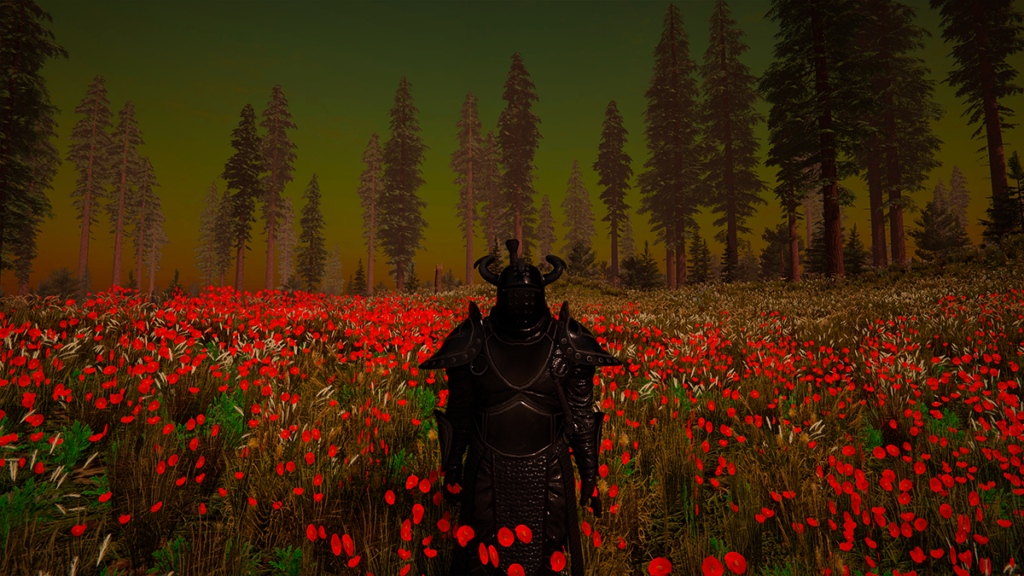 Temple Magazine
Temple Magazine
Before diving into your work, can you tell us about your background and what led you to explore the digital and video game universe?
Mélanie Courtinat
I am both a contemporary artist and an art director, and I work exclusively with digital tools, primarily those of video games. I use game engines to create immersive experiences and virtual worlds. Concretely, this takes the form of 3D images and films, but mostly small artistic video games and virtual reality experiences. I'm particularly drawn to the core mechanics of gameplay—breaking them down, dissecting their inner workings, and exploring the emotions they generate.
At the same time, as an art director, I assist luxury, fashion and high jewelry brands in integrating video game culture and new technologies into their experiences. This can involve creating immersive worlds or interactive experiences tailored to their identity.
Finally, I give lectures and courses in various art schools, for example I teach video game history at ECAL in Lausanne, I regularly run workshop on virtual reality at Beaux-Arts de Paris, I’m also a mentor for the video game section at Gobelins Paris.
Temple Magazine
What led you to use these digital tools in your artistic practice? Was video gaming already part of your world before you became an artist?
Mélanie Courtinat
I played a lot of video games as a kid, even though my parents did their best to stop me (and now, it’s my job!). What fascinated me was the freedom to explore, the ability to discover worlds beyond what other media could offer. But I never thought it was possible to be an artist and make video games. At the time, I loved creating, but I didn’t know which direction to take. I started developing my creative practice at Ateliers de Sèvres in Paris, where I quickly realized that I was terrible at everything: bad at drawing, mediocre at photography, terrible at architectural drawing… Basically, it wasn’t looking good.
Then, I discovered the Media & Interaction Design program at ÉCAL in Switzerland. That’s when I finally found my place, though even there, I felt like the only one interested in video games as an artistic medium. One day, I believe it was in 2016, at a dear friend’s place—he was the type to always have the latest consoles—he let me try a virtual reality headset and it was a revelation: “This is what I want to do.” I emptied my savings to buy my own headset and PC and made my graduation project in virtual reality. Unfortunately, at the time, it didn’t go over too well at my school.
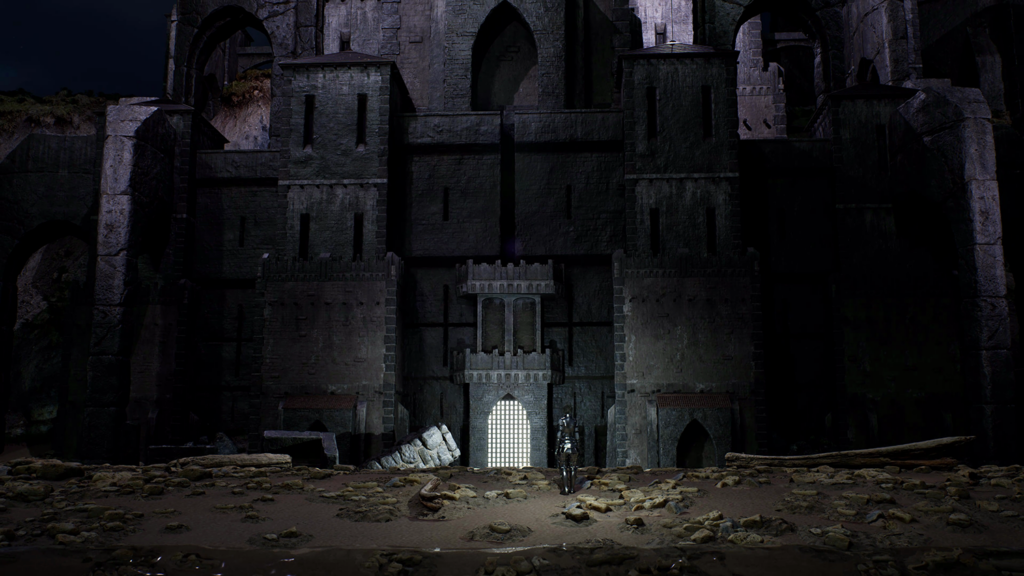
Temple Magazine
What year was that?
Mélanie Courtinat
2017. So not too early, but not too late either. The school ended up investing in several VR headsets after I left. I even conducted a VR workshop there 2 years ago.
Temple Magazine
And what was your graduation project?
Mélanie Courtinat
A super angry-teenager project. At the time I was frustrated that people didn’t realize how extraordinary VR was, so I created a piece that punished those who didn’t actively engage with it. It wasn’t designed to guide the viewer, it was almost a revenge: “Oh, you don’t want to play? Okay, well then, you get nothing.”
Now, I don’t have that mindset anymore. Looking back, I realize that interaction with these new media isn’t automatic. We’ve been told our whole lives in exhibitions: “Look with your eyes, don’t touch.” But in video games, it’s the opposite. You have to try, grab the controller, interact. Now, my goal isn’t to punish people anymore, but to give them a hand.
Temple Magazine
After school, did you immediately know what you wanted to do, or did you consider working in the video game industry?
Mélanie Courtinat
Honestly, I was not drown to the industry at all. In France, if you want to work in video games, you automatically think about joining big companies like Ubisoft… But I didn’t want to be a tiny cog in a massive machine, working hard just to be in charge of something like the clouds in one scene of a giant game. I’ve actually collaborated with Ubisoft a few years ago for an exhibition, but as an invited external artist, which was great.
What worried me most after school was sustaining myself. My VR graduation project had been destroyed by the jury, but I still believed in it. So, I Googled things like “open call virtual reality”, applied everywhere, without even knowing if the opportunities were legit or not. And it worked. I started exhibiting my work all over, and in 2018, I even got to present my work at the Tokyo Game Show, which was my absolute dream.
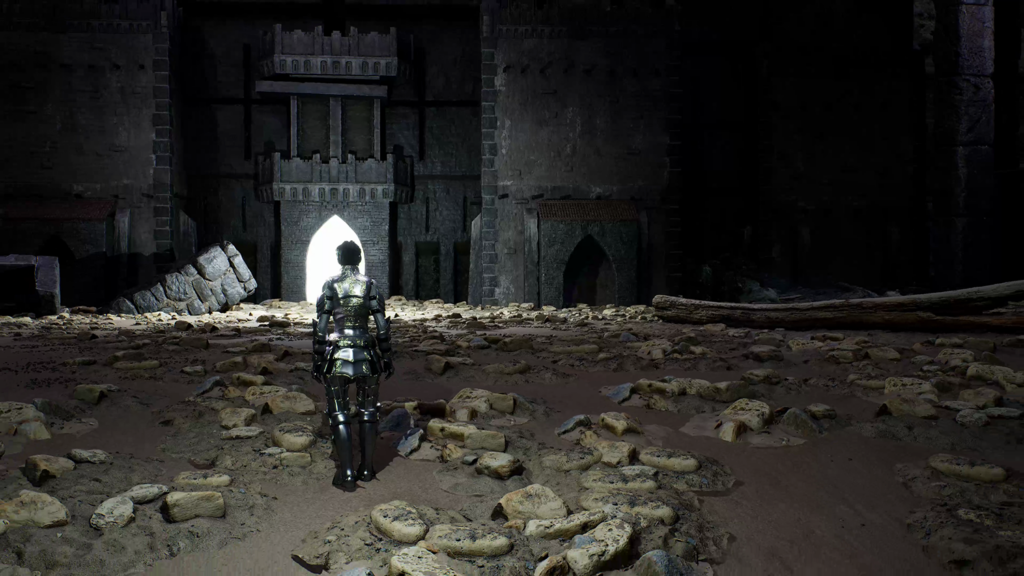
Temple Magazine
Was that when you started working with brands?
Mélanie Courtinat
Yes, and totally by accident. One day, LVMH reached out, they were looking for a VR piece for their pavilion that was themed around new technologies and very specifically hanging gardens. I had a piece that fit perfectly, so they offered me to rent it and showcase it for a day. I thought, “Wait, you can make money like this?” That opened up a whole new perspective for me. That’s when I started working between art and brands, developing luxury experiences, while still maintaining my own artistic practice.
Temple Magazine
Over the past few years, things have evolved a lot. Your work is now exhibited alongside traditional plastic arts. Do you feel like those boundaries are disappearing?
Mélanie Courtinat
Yes, more and more. Museums and galleries weren’t at all prepared to exhibit VR or video games. It wasn’t a common medium for them, and it brought a lot of technical challenges. But now, that’s changing. My work is being exhibited in museums alongside paintings and sculptures. What remains a challenge, though, is accessibility. Many visitors have never held a controller in their lives. So I have to teach them everything, give them visual cues so they understand how to interact.
To give a quick, simple example, in one of my games, the controller glows, and there’s a straight forward message on screen that says: “Grab the glowing controller and press A to start.” Just that small instruction helps them understand that even inside the game, when they come close to shiny objects, they can collect them by pressing A. It’s a kind of invisible tutorial, and it works.
Temple Magazine
And in your games, beyond the technical aspect, what themes do you explore?
Mélanie Courtinat
I feel like my main drive is that I want to show audiences how amazing the mediums I use are. For me, video games aren’t just about entertainment. They can also convey deep emotions, address social and political messages, and open up new spaces for reflection. Recently, I’ve realized that I explore themes of isolation and the search for meaning a lot. I often create worlds where the player embodies a lone character, trying to understand their environment without too many clues. Many of my characters are seeking a space where they feel they belong.
But it’s always afterward that I realize my work was about that. At the time, I’m not consciously thinking, “I’m going to make a game about isolation.” I just create, and later, I realize, “Oh, of course, this was about that all along.”
Temple Magazine
Visually, your games have a strong identity, especially in the environments you create. How do you approach architecture and space in your work?
Mélanie Courtinat
I love architecture, especially brutalism. Those huge, raw concrete structures—they’re so inspiring. In my work, I’m not necessarily looking to tell a story in a traditional sense. Narration itself isn’t the first step. What I love most is creating worlds. The emotion I want to convey comes primarily from the space itself, the atmosphere, and how the player moves through the environment. That’s why I focus more on world-building than on characters. Lately, I’ve been trying to push myself to create more characters, but it’s more of an exercise than something that comes naturally to me.

Temple Magazine
How do you approach sound design in your projects? Do you collaborate with composers, or do you handle it yourself?
Mélanie Courtinat
For me, sound is 50% of the experience. A great soundscape can completely transform how a game feels. I often work with Yatoni, a friend and composer I used to be roommate with. It’s easy to communicate with him because I can use completely non-musical words, and he understands exactly what I mean. I can say something like “It needs more magic” or “It should be shinier”, and he knows how to translate that into music. Sometimes, when I don’t have a budget for an original soundtrack, I just do it myself. I grab sound effects from YouTube, spatialize them using my 3D tools… It's a DIY approach that is highly questionable, but I do my best..
Temple Magazine
Your first solo show is coming up in Fall 2025 at New Galerie in Paris. How are you approaching the installation of your work in the space? Has preparing for this exhibition—and the likelihood of many more in the future—changed how you think about scenography? Would you consider incorporating immersive installations, or do you think adding too many layers might obscure the core of your work?
Mélanie Courtinat
Honestly, I don’t know yet. I feel like if scenography becomes a bigger part of my work, I’ll need help. I’d need an external perspective, someone who can help me understand and manage physical space, because it’s not something I naturally grasp. For someone who likes to build words, that’s ironic. Even just in interior design, I’m terrible. For years, whenever people visited my apartment, they’d ask, “Did you just move in?” when I’d been living there for ages. It’s not even that I particularly care about minimalism, I just don’t think about decor too much.
Temple Magazine
So, would you say this isn’t a central aspect of your work?
Mélanie Courtinat
Exactly. In virtual spaces, it’s so much easier! If I don’t like something, I just hit Ctrl+Z. In two clicks, I can triple the size of an object so that it’s perfect. But in real life, if the couch you ordered ends up being too big for your space, you can’t magically shrink it. Unless you cut it with a saw—but I digress.
Temple Magazine
That also raises questions about the conservation of digital works.
Mélanie Courtinat
Yes, how long can a video game remain accessible? Will collectors have to update their machines every X years just to keep it running? Museums and galleries still aren’t always well-equipped for this kind of work. They don’t necessarily have gaming laptops or VR headsets. I make sure my games run on machines as accessible as possible, but it’s still a challenge.
Often, galleries are a bit lost when it comes to installing my work. I have to provide highly detailed guides, like “Download this file, unzip it using right click, wait for it to unzip completely, click here…” But things are improving. Some institutions are investing in the necessary equipment, which is a really positive sign for the future.
Temple Magazine
And does that add a lot of extra work for you?
Mélanie Courtinat
Definitely. But I see it as a necessary adaptation. Other artists have to pack their pieces and organize transports, while I just need to make sure the game runs properly. Sometimes, though, it’s a battle. Recently, I was dealing with an exhibition space where the technical team kept insisting, “Your files don’t work.” But I knew everything was fine. I had tested my games on a thousand different computers before sending them anything.
So I had to stand my ground and say, “The problem is on your end.”, over and over. And in those moments, you can’t doubt yourself. You can’t slip into imposter syndrome and think, “What if I really did send the wrong files? What if I messed up?” No. I know what I’m doing. My games work, their computers were not functioning properly. That said, in the end, they did invest in two brand-new computers just to show my work. That’s rare, and it’s a really encouraging sign!
Temple Magazine
You can also feel that there’s growing curiosity from the public about virtual experiences.
Mélanie Courtinat
Yes and it makes sense. We almost spend more time looking at screens than at the real world, so it’s only natural that art reflects that shift. Plus, video games aren’t that much of a new medium anymore. People grow up with them, they understand the mechanics, they know the vocabulary of games.
That said, even today, I teach students in their 20s who have never held a controller before. So at least I know I’m not completely outdated yet!
